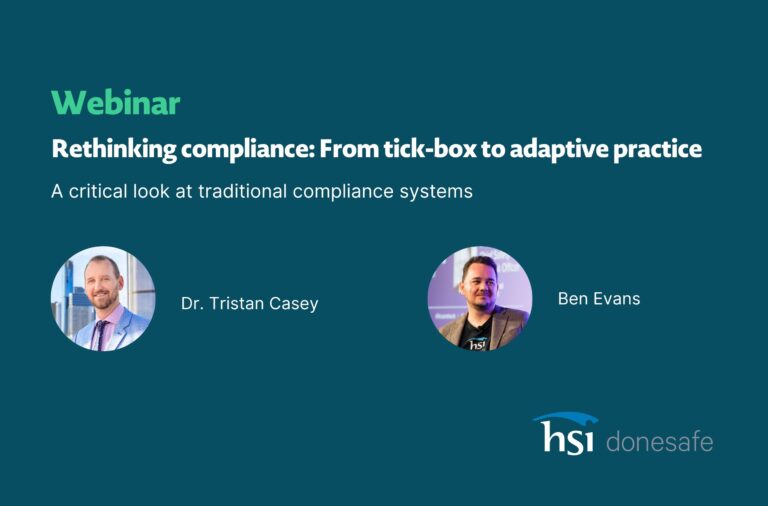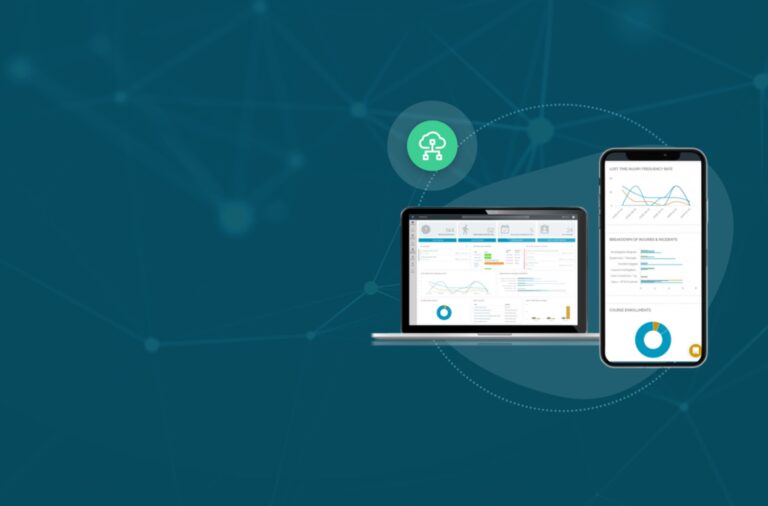
As the year comes to a close, it’s natural to reflect on what’s worked, what hasn’t, and where your organization is headed. For many businesses, safety is one of those areas that feels like it’s always on the “to improve” list but never quite reaches its full potential. Sound familiar?
Let’s talk about the reality many organizations face. Safety programs are held together by spreadsheets, paper forms, and disconnected systems. Reporting takes days, sometimes weeks, because data is scattered across platforms or buried in files. People spend more time managing admin than driving real change. And all too often, incidents are underreported because it’s just too hard for employees to engage with clunky processes.
But here’s the truth: these challenges aren’t just operational headaches. They’re opportunities. Opportunities to transform safety into a strategic advantage that saves time, protects people, and builds a culture of trust and accountability.
The stakes couldn’t be higher. According to the International Labour Organization, workplace accidents and illnesses cost the global economy nearly $3 trillion annually—representing almost 4% of the world’s GDP. These aren’t just numbers; they’re a reflection of inefficiencies, preventable risks, and human costs that demand immediate action.
The Hidden Cost of Staying Stuck
Let’s face it—spreadsheets are free, but they’re costing you more than you think. Every hour spent manually pulling reports or cross-referencing data is an hour not spent improving your safety program. Every error in a spreadsheet or delay in reporting an incident increases your risk.
And those risks add up. OSHA reports that human error is the root cause of up to 90% of workplace accidents, and nearly all of these are preventable. The question isn’t whether you can reduce accidents but whether your current systems are set up to do so effectively.
How much is that risk worth to your organization?
One injury. One audit finding. One moment of inaction. These things can cost more than dollars; they cost credibility, morale, and the safety of your team.
If you’re still relying on manual processes or fragmented systems, ask yourself this:
Is the “pain of change” really worse than the pain of staying stuck?
Turning Pain Points into Opportunities
Every challenge in safety management is an opportunity to do better, smarter, and faster.
- Reporting doesn’t have to take days. When systems are integrated, and data flows in real time, reports can be customized and delivered to the right people instantly. Imagine a world where you’re not scrambling to create board-level reports at the eleventh hour (see how this council reduced reporting time from weeks to hours)
- Admin shouldn’t dominate your time. Automation is a game-changer. The moment an incident is logged, corrective actions, workflows, and notifications can be triggered automatically. No more chasing down updates or manually pushing things forward.
- Your system should work for you, not the other way around. A no-code platform means you can adapt it to fit your unique needs without paying for expensive customizations or unused features.
When these elements come together, safety evolves from a routine task into a strategic asset; reducing mistakes, increasing participation, enhancing team performance, protecting your people, and strengthening your business.
The ROI Executives Can’t Ignore
For executives, safety needs to speak the language of business. That means showing ROI in terms they can’t ignore.
- Time is money. How much time do your teams spend on admin and reporting? Streamlining processes frees up those hours for strategic, high-impact work.
- Data is power. Accurate, real-time reporting leads to better decisions at every level—from line managers to the C-suite.
- Inaction is risk. What’s the cost of one serious incident? The fallout from a failed audit? Investing in safety isn’t just about compliance; it’s about protecting the people and reputation that drive your business.
Safety is a strategic lever for you, not a checkbox or a budget line item. It’s the difference between being reactive and being proactive, between treading water and driving meaningful change.
→ Are you a safety leader that struggles with Executive Buy In? This article can help.
The Choice Ahead
As you look ahead to 2025, ask yourself: What’s holding your safety program back? Is it outdated processes, fragmented systems, or resistance to change?
Now is the time to move forward—to leave behind the spreadsheets and the manual grind, placing safety at a heart of your business. Change isn’t always easy, but the rewards speak for themselves: streamlined systems, safer workplaces, and leadership that begins with decisive action.
Ready to make safety a strategic priority? It starts with a conversation. We’re ready to chat when you are.
———————————————————————————————————————————————————–
If you’re ready to take your safety culture to the next level and truly see the impact it can have, why not start the conversation? Get in touch with us to explore how HSI Donesafe can help you build a safer, healthier, and more resilient environment for your team.
Whether it’s refining your approach or exploring how the right tools can make all the difference, we’re here to help you every step of the way. Let’s make safety more than a box to tick.
Keep your team safe with HSI Donesafe.
Chat with us today.
Share:



